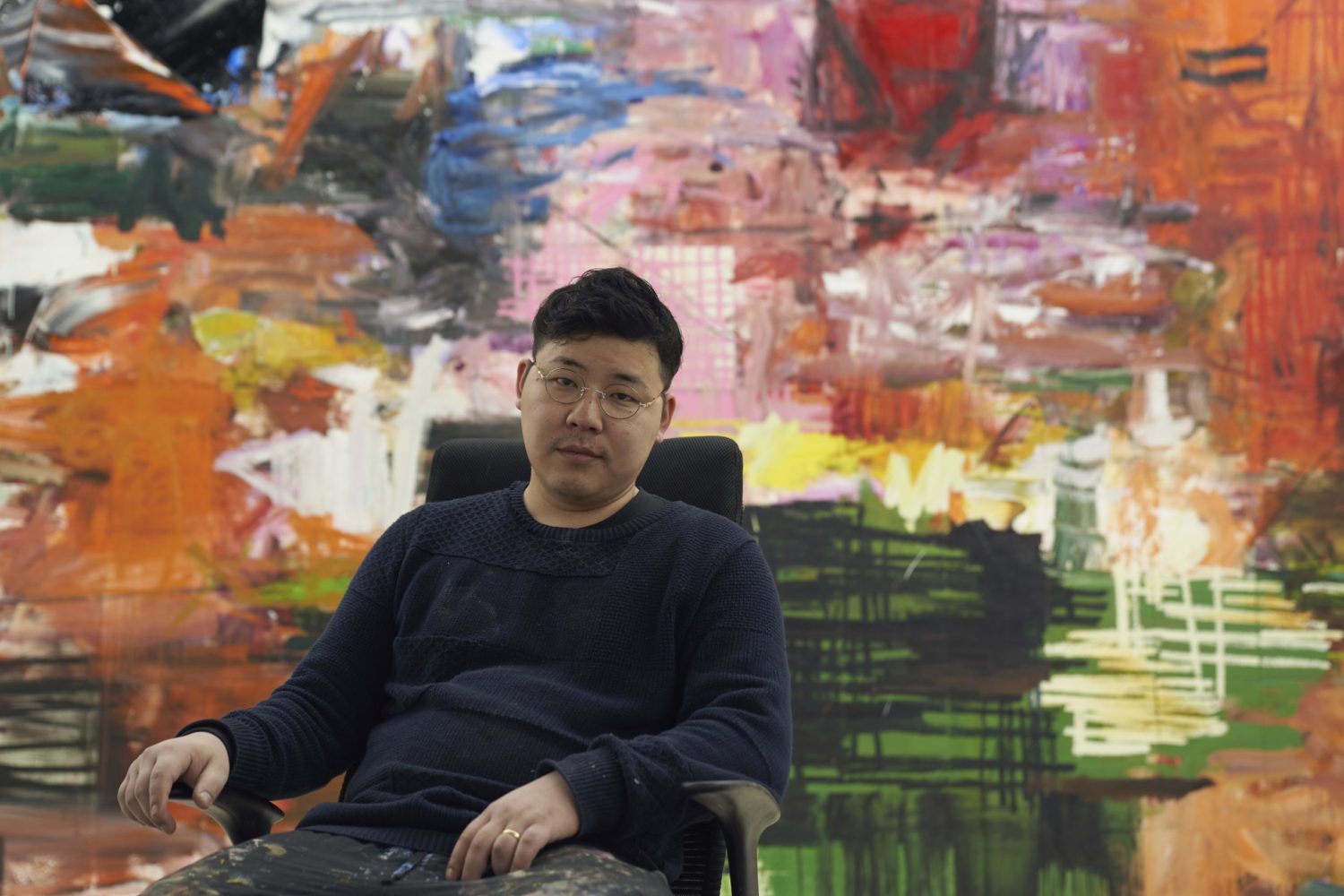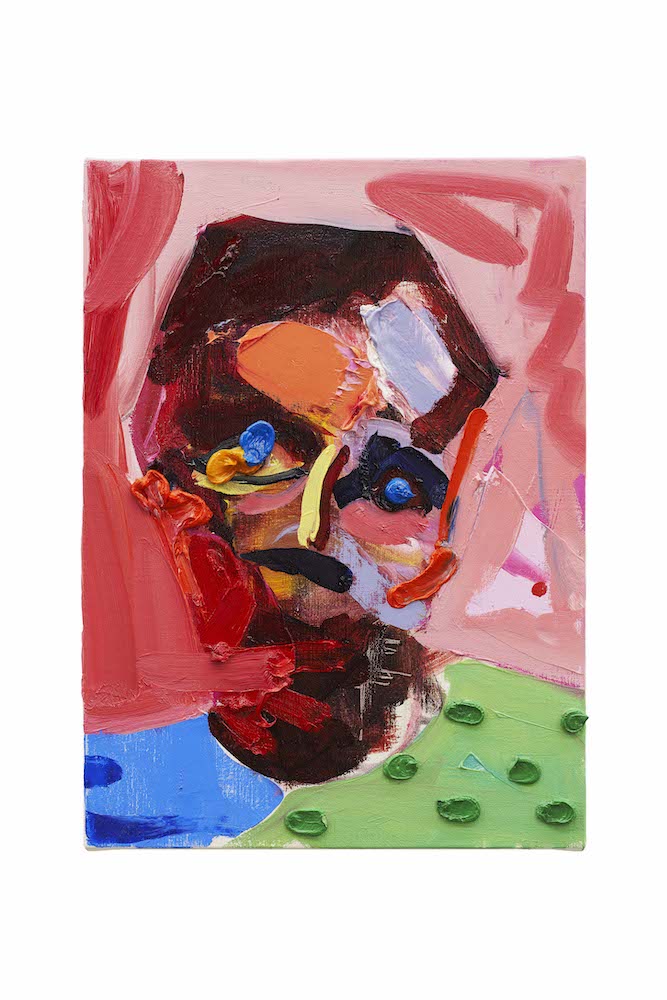Late last year, the work of the artist Yukimasa Ida was included in Perrotin’s group exhibition “Healing” at its Paris Matignon location. Curated by Takashi Murakami,the show was the second in a series that featured 11 Kaikai Kiki artists.
“When [artworks] are produced, the artists and all those involved continue to work as though in prayer, never stopping until ‘beauty’ that is apparent to any beholder emerges, no matter how many years it takes,” said Murakami about the exhibition. “As the times change, doubts may emerge, and the purpose for forging ahead may get lost at times. But when they force the production to propel through the finish line, fundamental ‘beauty’ emerges; that is when a work worthy of devotion is born.”
In line with this sentiment, Ida’s practice acknowledges that the moment “now” will never happen again. With the concept of “ICHI-GO ICHI-E” (a once in a lifetime moment) as his guide, the Japanese artist crystalizes these moments, like stills from a film, through the use of intense hues and a mixture of pristinely intentional and gesturally erratic markings.
Casting a mythical lens of abstraction to subjects that are still clearly discernable, the artist typically works in portraits, but also creates landscapes and other visuals, too. On view in “Healing,” was a minuscule self-portrait with dobs of raised red, green, and blue oil paint and a swirling, 39 x 31 inches depiction of the artist’s friend, titled Mori.
To learn more about his contribution to the exhibition, “ICHI-GO ICHI-E,” and his practice as a whole, Whitewall spoke to the artist.
 Portrait courtesy of Yukimasa Ida.
Portrait courtesy of Yukimasa Ida.
WHITEWALL: Can you tell us about the work included in the exhibition “Healing” at Perrotin Paris, as well as the process behind them?
YUKIMASA IDA: At Perrotin Paris, I exhibited a thickly painted portrait that I have been working on for the last four years. The subject is my friend, who I painted in an abstract way with a mixture of random and intentional markings using intense impasto. The show also includes a series called “End of today,” which I draw daily like a picture diary.
A model is always present when I paint a portrait, but there’s always a distance or a recognition gap (internally and externally) between the painter and the model. In that sense, I have self-interpreted my painting style as, “I’m not sure whom I am painting, but it does look like everyone.” Concepts like commonality and uniqueness or reality and self-understanding seem contrary to each other and hold opposite meanings, but they actually coexist like chaos—I feel this is actually similar to the truth of the world. I feel confident that if I could capture all of these ideas and throw them into my works, they will ultimately reach a real beauty as an artwork.
WW: Takashi Murakami for that show described creating an artwork as akin to working in prayer, never stopping until beauty emerges. Would you describe your way of working in a similar way?
YI: For me, the feeling I get when producing great work is similar to the moment you meet a beloved friend. When the progress of my work goes well and it starts to become a wonderful image, I feel grateful and naturally put my hands together—a prayer thanking God for letting me encounter this work.
In Japan, we have a tradition of having Buddhist altars at home to pray for our ancestors. My grandmother sits in front of the altar every day not only to pray for the ancestors, but also for me, my family, and my brother. Whenever I see her pray, I always think it’s a beautiful sight—and I feel that this concept of praying applies to art as well. A prayer is an act occurring from the heart, so I strongly wish to be in a state of prayer when producing works.
 Yukimasa Ida, “Mori,” 2020, oil on canvas, courtesy of the artist.
Yukimasa Ida, “Mori,” 2020, oil on canvas, courtesy of the artist.
WW: Has art been a source for “healing” for you during the trying and challenging past year?
YI: To tell you the truth, I feel that there were more times when it felt difficult. However, there were some points when working on art rescued me—which is owed to the people who came to see my works despite the tough situation. The reactions varied, but all of them were some kind of healing for me. Additionally, my thoughts have become even stronger that hope has to be at the root of art.
WW: How did you first start exploring the concept of a once in a lifetime moment, “ICHI-GO ICHI-E”?
YI: The concept was born when I first visited India to see art. The chaos of life and death there appeared beautiful to me—the sunset of the Ganges illuminating the town; the corpses lying on the side of the road; the tourists and rich people walking beside them like they didn’t see anything.
A festival was also happening at the time of my visit. The contrast of the lives ending on the roadsides and the people celebrating gave me a feeling like I was gazing at a different world.
After returning to Japan, I thought of the people I encountered on that trip, the people I’d never meet again in my life. Memories transformed the coexisting reality of life and death into flat momentary images like a film and what I wanted to do was to project them eternally, like crystalizing them.
That’s how “ICHI-GO ICHI-E” became my theme. It not only means “once in a lifetime moment” but also contains ideas of life and death, memories, time, etc.
 Yukimasa Ida, “Self portrait,” from the series “End of Today,” 2020, oil on canvas, courtesy of the artist.
Yukimasa Ida, “Self portrait,” from the series “End of Today,” 2020, oil on canvas, courtesy of the artist.
WW: What does your artistic practice look like these days? What is a typical day in your studio like?
YI: My days are mostly spent in the studio except for sleeping. In between, I occasionally go out for a walk, cook for myself, have tea, but working on art takes up the majority of my time. Every day is a repetition of this routine.
There were days where I felt a little frustrated with the lack of input due to this COVID-19 pandemic, but now I’m trying to shift my mind to enjoy my inner universe. In fact, this has taught me that I don’t even have a good understanding of myself.











